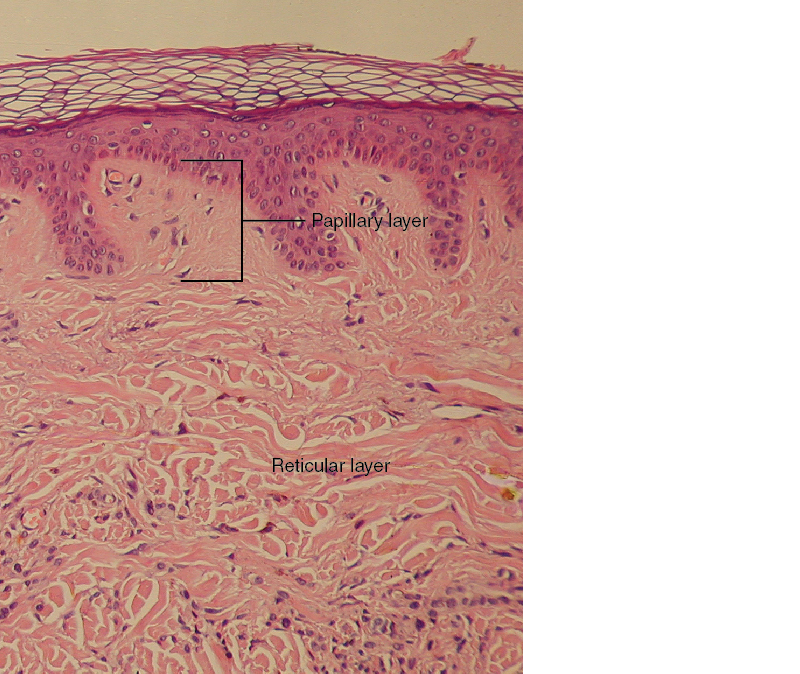Think About This: Which structure in the skin will help you grip a glass? Informs you that the glass is cold or lets you know it's a smooth glass or textured? Read on ...
Two Dermal Layers
The papillary layer is composed of loose connective tissue and is vascular. At the upper portion there are dermal papillae (papilla = ridge) that point upwards making ridges, called friction ridges. These papillae create patterns of complex whorls, loops and arches in thick skin that help you grip things and make our unique fingerprints.
The reticular layer is composed of dense irregular connective tissue and is vascular. The vascular dermis supplies epidermis, since it's avascular. Newborns look ruddy because epidermis is thin, so the vascular dermis shows through.

Figure 6. Micrograph of Dermal Layers: The papillary layer with its papillae labeled and the much larger reticular layer are shown.
CC BY: OpenStax College
The subcutaneous or hypodermal tissues insulate, store energy and anchor the skin.The hypodermis is not actually part of the integument but does stabilize skin relative to underlying tissues while allowing lots of movement by skin. In deeper portions there are a limited number of capillaries so it is a good area for injections ("hypodermic" needle), and medicines are absorbed at a slower rate here into the fatty tissue than when injected into muscle (IM).



